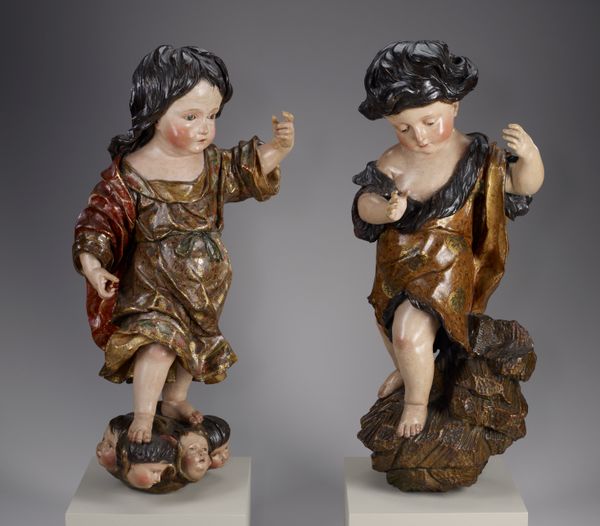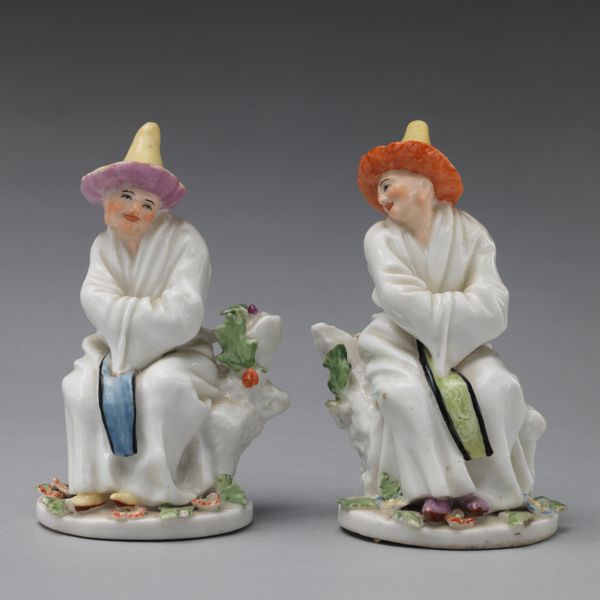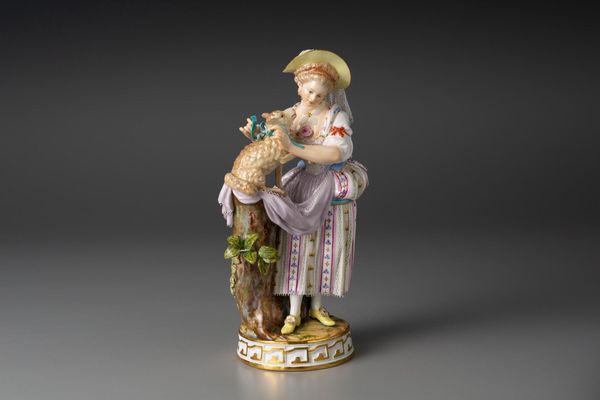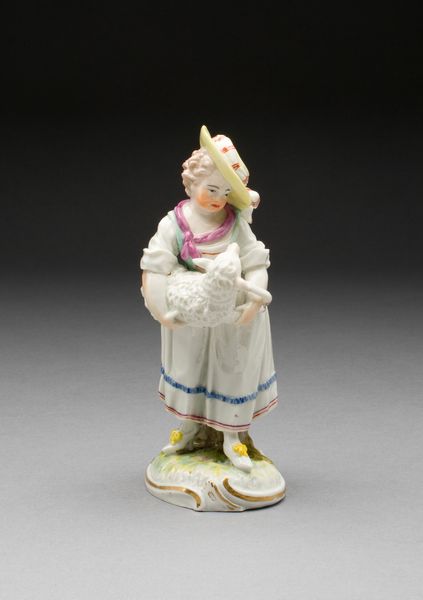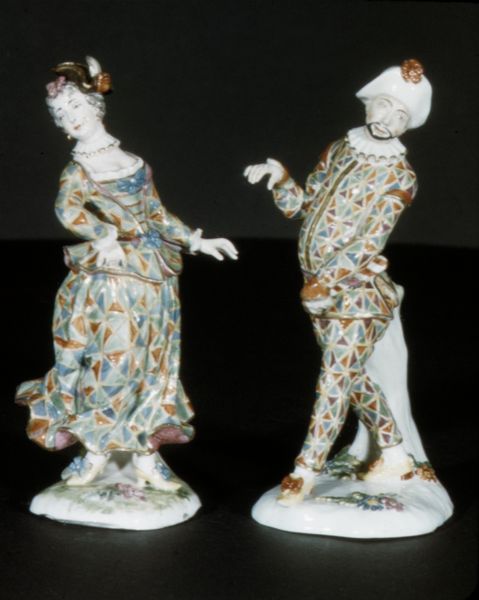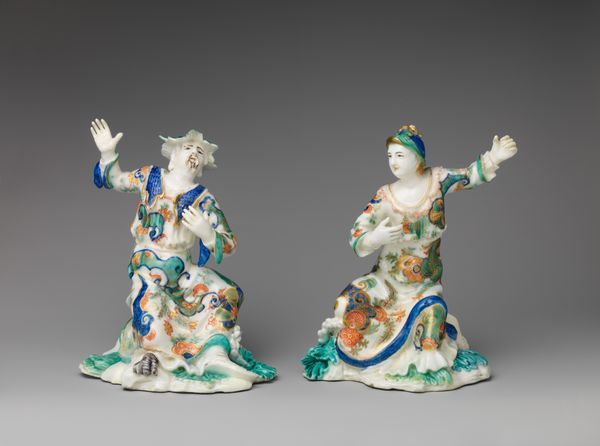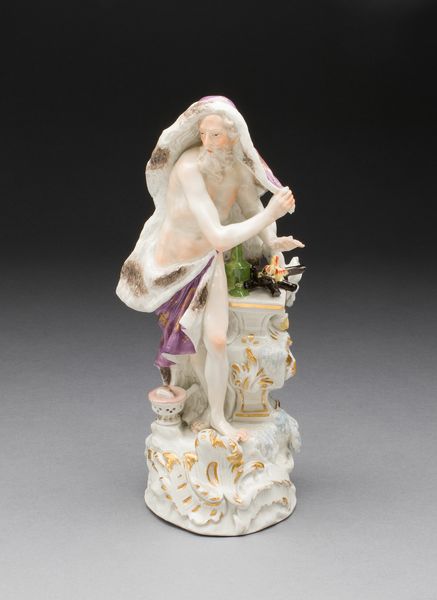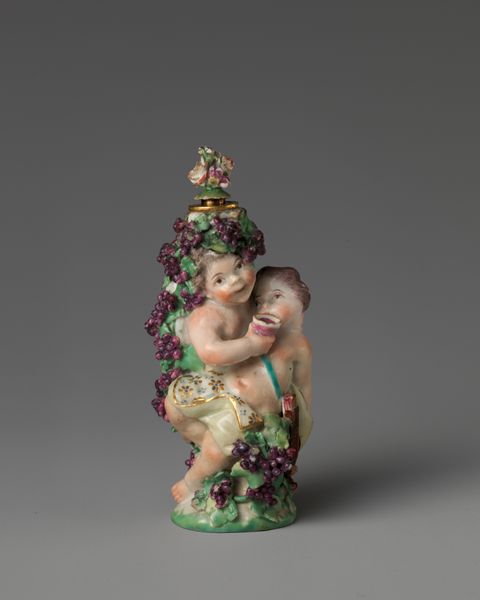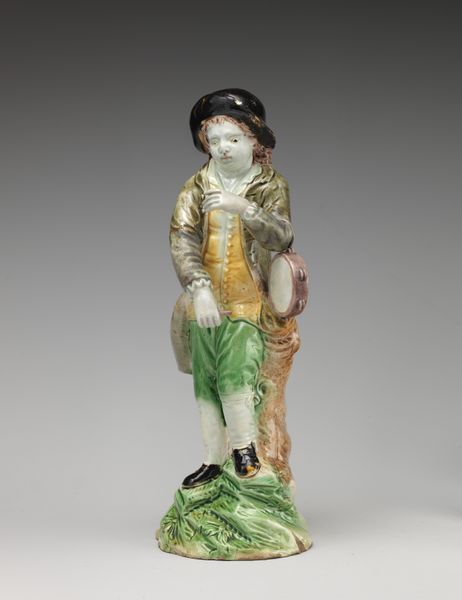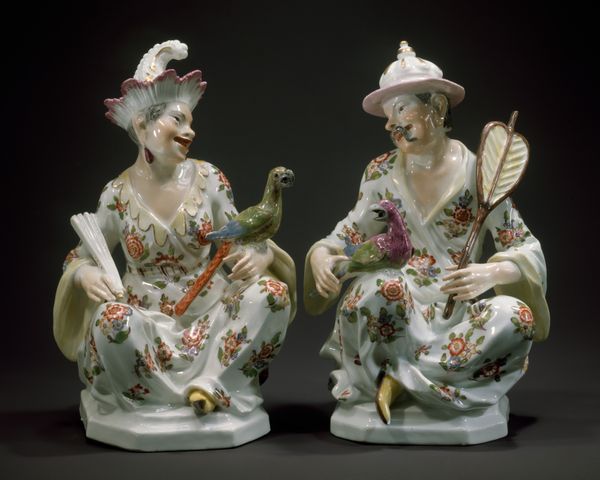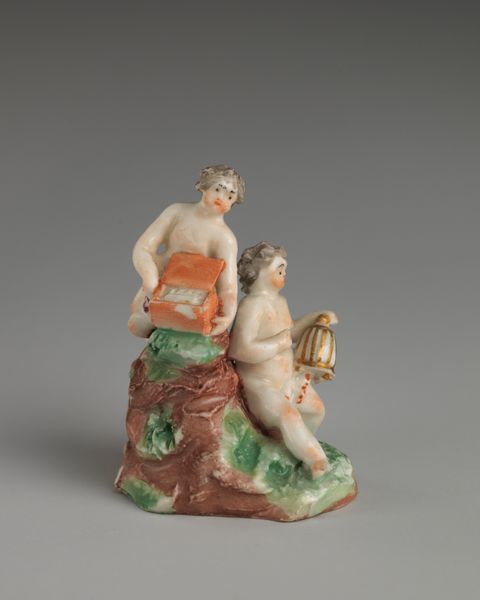
carving, glass, sculpture, wood
#
carving
#
baroque
#
sculptural image
#
figuration
#
glass
#
sculpture
#
wood
Dimensions: 23 3/4 x 10 11/16 x 8 1/2 in. (60.33 x 27.15 x 21.59 cm) (without bottom peg)
Copyright: Public Domain
Editor: Here we have two wood carvings attributed to Felipe de Ribas, titled "John the Baptist as a Child," dating back to about 1640. The figures stand on unique bases. There’s an incredible vulnerability captured in their expressions, almost melancholic. What draws your eye when you look at these pieces? Curator: Oh, they just pull you in, don't they? Ribas—or perhaps his workshop—had this incredible knack for imbuing religious figures with humanity. The Baroque period often used drama, but here, it's subtle, contained. It's in the turn of the head, the downcast gaze. Look at the textures—the wood, the paint, the hints of gilding catching the light. Did you notice one child stands upon cherubic heads, whilst the other stands upon what seems to be uncarved rock? They both seem so unaware, it adds a kind of dreamy, portentous aura to the works, wouldn’t you say? Editor: Absolutely. It’s intriguing that one stands on cherubs and the other on rock, each elevated. Almost like different paths…destinies. The cherubs could represent divine support, while the rock—perhaps, something more earthy, human? Curator: Precisely! Or think of John the Baptist: solitary ascetic living in the wilderness—he needed solid rock under his feet, and divine inspiration too. Artists and thinkers from around this period—well they tended to see humans as a sum of experiences from earth and from above. He almost becomes Everyman, or Everychild in these carvings, don’t you think? Editor: Yes, a poignant representation of human innocence set against a backdrop of spiritual symbolism. Curator: So beautifully articulated, and what remains with me is just that gentle air, it feels rather more intuitive than intellectual, it allows a more personal meditation and understanding. Editor: That makes perfect sense. The artistry is exquisite. These small carvings seem to capture immense presence and depth.
Comments
minneapolisinstituteofart almost 2 years ago
⋮
The figure of the Infant Saint John the Baptist was carved as a companion figure for the Infant Jesus Christ (on the opposite pedestal).
Join the conversation
Join millions of artists and users on Artera today and experience the ultimate creative platform.
